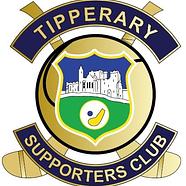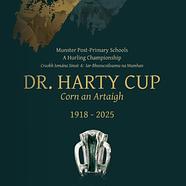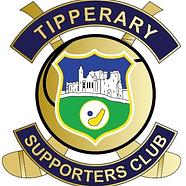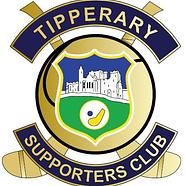Limerick hold the aces against injury-hit Tipperary whose championship could be over
Tough job: Tipperary’s season this year is probably a poisined chalice for Colm Bonnar, who is faced with trying to make a weakened side face up to the Limerick machine
May 07 2022 02:30 AM
FOR Tipperary, there’s a temptation to depict this as the most vertiginous exercise since Philippe Petit’s 1974 highwire walk between New York’s twin towers.
Limerick are 1/10 favourites to, essentially, evict Colm Bonnar’s men from the championship tomorrow. The All-Ireland champions’ poise and engineering are considered far too advanced for a hopelessly depleted Tipp.
In a week that John McGrath underwent surgery on his Achilles, Jason Forde and James Quigley joined an injury list already including Séamus Callanan and John ‘Bubbles’ O’Dwyer.
Add in the now-retired Pádraic and Brendan Maher and the scale of Tipp’s depletion from last year’s Munster final collision between these counties finds joltingly stark expression. And that was a game in which Limerick turned around a 10-point half-time deficit by winning the third quarter 1-10 to 0-1.
This is becoming an uneven rivalry, given you must trawl back as far as June 19, 2016 for Tipp’s last meaningful championship victory over Limerick.
Conor O’Donovan, an All-Ireland winning team-mate of Bonnar’s in ’89, hurled at minor and U-21 for Limerick before switching his allegiance in ’82 having relocated to Nenagh a couple of years earlier from his native Effin. He detects genuine apprehension within Tipp about what tomorrow might bring.
“Even if Tipp were able to put out a full-strength side, Limerick would still be overwhelming favourites,” says O’Donovan. “So it’s not looking good.
“I’d hate to think that it could get ugly but, given the way Clare so easily out-muscled Tipp the last day . . . you’d have to say Limerick are a superior team to Clare and every bit as physical, if not more.
“So it’s understandable that that fear is in Tipp now. So many key players are missing, it’s hard to see who can steady the ship. And you’d have to feel for Colm in that just about anything that could have gone wrong for him has.
“Personally, I think the loss of Paudie Maher’s presence has been huge. He was always a great inspiration to those around him. His forced retirement was a real sucker-punch for everyone.”
In the past, Tipp’s discomfort with Limerick ran no deeper than an instinct that hope could make them dangerous.
Tipp were usually better after all. And being usually better than the likes of Clare and Waterford led to broadly linear, uncomplicated rivalries. Limerick? Their understanding of hierarchy might have spawned a largely compliant history against Cork. But against Tipp, deference would be the last thing in their bellies.
When they looked across the border, it was as if all they saw was a team with notions. Now that punkish streak didn’t always make them competitive, but they were reliably quarrelsome. Richie Bennis always believed that their single-point victory over Tipp in the ’73 Munster final armed Limerick with a different sense of what was possible against the Premier County.
It was, after all, a success emboldening them to go on and claim their first senior All-Ireland since 1940 while condemning Tipp to an extraordinarily troubled decade in which they would not manage a single championship win. Limerick duly contested six of the next eight Munster finals.
‘Babs’ Keating’s arrival as Premier manager in late ’86 re-tilted the balance and Tipp would win four successive championship meetings with Limerick between ’88 and ’91. Through that spell, superior stickwork was invariably sufficient to overcome dander.
Limerick had men sent off in the ’90 and ’91 meetings, their hurling pitched at a heat that invariably had them walk a disciplinary tightrope.
And this would become a galling time for the men in green. Just as Babs’ Tipp began to flower with a first senior Munster crown in 16 years (’87), Limerick were coming with an All-Ireland winning under-21 team that had generational players like Gary Kirby, Ciarán Carey and Mike Houlihan on board. But that bridge from underage to senior might as well have traversed an ocean.
“We had no confidence, no self-belief,” Kirby told this writer in 2001. “Tipp always seemed to pull away from us.”
For all that, Tipp knew better too than to ever presume things against Limerick. Back in ’81, they’d squandered a 14-point lead in the Munster semi-final, Joe McKenna’s three second-half goals earning Limerick a replay they would win with some comfort. 11 years later, Tipp led 0-11 to 0-3 half-way through the league final only for a late Ray Sampson point to give Limerick the trophy.
In ’96, Tipp were 10 points up at half-time in the Munster final only to end up losing in a replay. If Tipp were invariably the better hurlers, Limerick often seemed steelier, prepared to dig deeper. They carried a venom into these games maybe best synopsised by then Tipp county chairman, Mick Maguire, in a speech to the team before their ’91 championship meeting when he declared: “Look, if Tipp were playing South Africa, Limerick would be shouting for South Africa!”
Nicky English grew up in Cullen – just half a mile on the Tipp side of the border with Limerick – and believes to this day that players from the middle and north of Tipperary never quite understood that venom and depth of rivalry players in the west of the county experienced from their Treaty neighbours.
Growing up in Effin, O’Donovan always understood that Limerick just had a different sense of place with Tipp.
“Back in the ’70s there was a sense that Limerick could never really put it up to Cork, but that they could always put it up to Tipp. Now there’s a complete reversal of roles . . . the question being asked is: ‘Can Tipp put it up to Limerick?’”
It is a question with a multiple of layers too, given that putting it up to today’s Limerick requires something more than just a skill-set and high work-rate. It requires an identifiable plan.
Limerick present opponents with two options. Hit your puck-outs long and the very best of luck contesting the landing area with giants like Diarmaid Byrnes or Declan Hannon, or go short and prepare to meet a green wall.
Traditional
Right now, Tipp – like Kilkenny against Galway last Sunday – look a traditional team struggling to recalibrate to the modern way. Thus far in this championship, they are said to have conceded 2-7 off their own puck-outs. Clare were happy not to contest Brian Hogan’s short deliveries the last day on the basis that Tipp’s ability to play through the lines did not carry any real threat beyond their own ‘45’.
In modern times, Tipp have seldom had a real ball-winning half-forward line, so the direct route has long been unappealing. Against Clare, they enjoyed just over 23pc success under Hogan’s long restarts and, against Limerick, it would be a surprise if that figure didn’t diminish further. But working through the lines can become such a sole and devouring pre-occupation (ask Cork) the danger is that you relinquish all sense of spontaneity and freedom in your hurling. In other words, you hurl with zero abandon.
So what must Tipp do tomorrow? O’Donovan delivers the bottom line.
“Look, no matter who the manager was going to be, this year was always probably going to be a poisoned chalice,” he says. “But what’s key is that the team shows great fighting spirit up to the final whistle now, whether winning or losing.
“That’s important. That at least they can walk off the pitch holding their heads high. Supporters just want to see players wearing that jersey with pride.
“Give them something to be proud of.”







